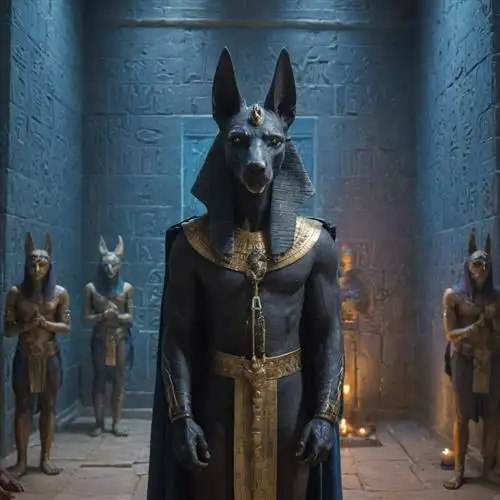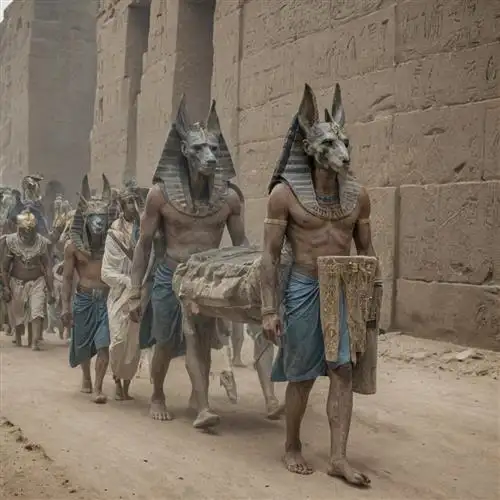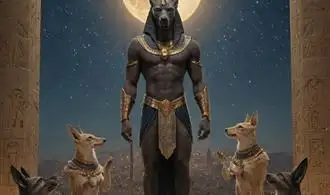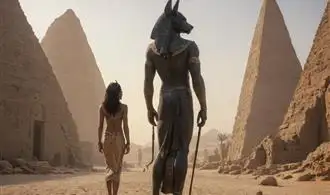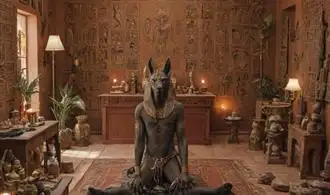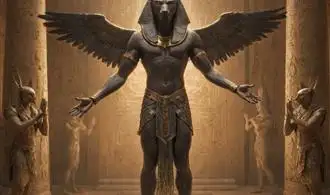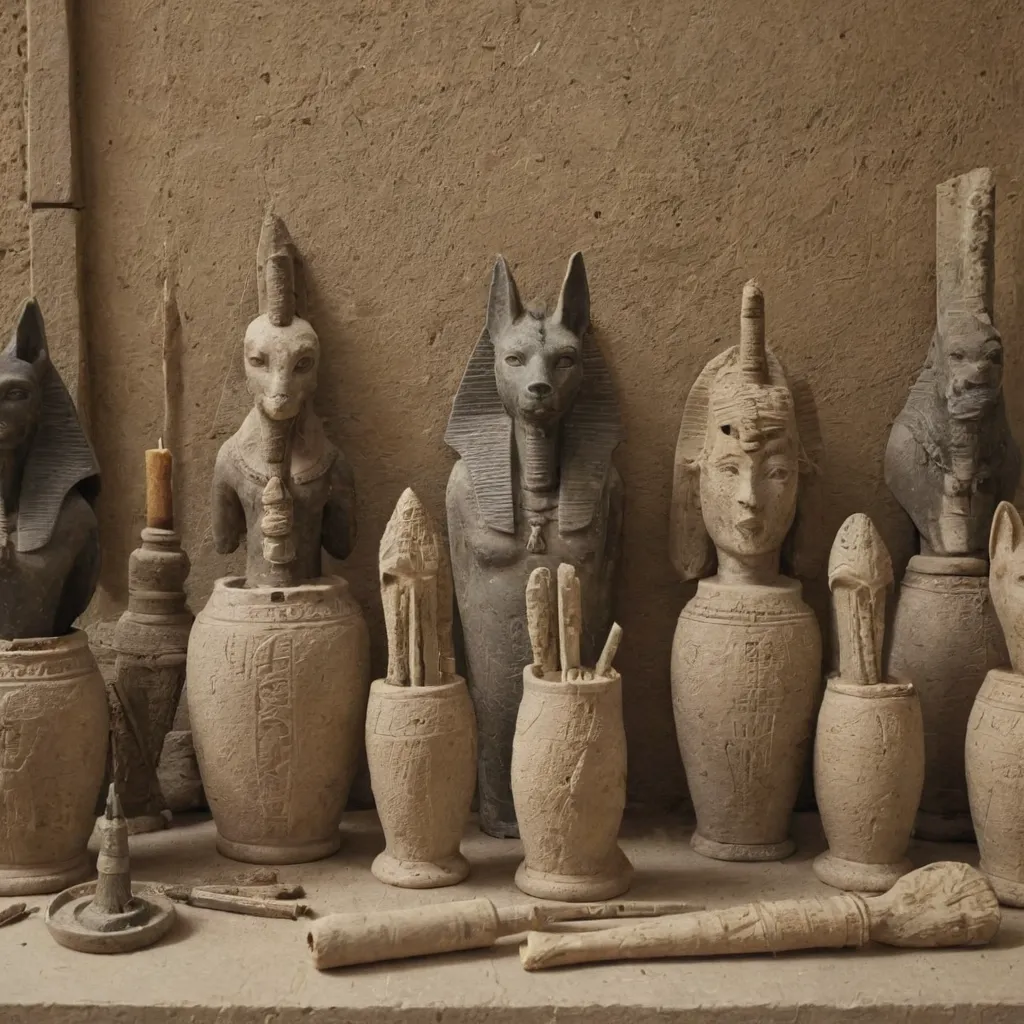
The Origins and Significance of Anubis Rituals
Anubis, the ancient Egyptian god of the dead, has long captured the imagination of scholars and enthusiasts alike. At the core of the Anubis mythology are the rituals that were believed to guide the deceased through the afterlife. These rituals, steeped in mystery and symbolism, hold a wealth of insight into the spiritual beliefs and practices of ancient Egyptian civilization.
The origins of Anubis rituals can be traced back to the earliest dynasties of ancient Egypt, where the jackal-headed god was revered as the patron of embalming and the protector of the dead. The rituals associated with Anubis were believed to be instrumental in the successful transition of the deceased from the mortal realm to the afterlife, ensuring a safe and bountiful journey through the daunting challenges that awaited them.
Central to the Anubis rituals was the process of mummification, which was seen as a sacred and transformative act. The embalmers, who were considered to be priests of Anubis, would carefully preserve the body of the deceased, removing the internal organs and replacing them with sacred oils and resins. This process was believed to prepare the soul for its journey, ensuring that the physical form remained intact and ready to be reunited with the spirit.
Beyond the mummification process, Anubis rituals also involved a complex series of funerary rites and ceremonies. These included the "Opening of the Mouth" ceremony, where the deceased's mouth was symbolically opened to allow them to speak and breathe in the afterlife, as well as the "Weighing of the Heart" ceremony, where the deceased's heart was weighed against the feather of truth to determine their worthiness to enter the afterlife.
The significance of Anubis rituals extended far beyond the immediate concerns of the deceased and their families. These rituals were believed to maintain the delicate balance between the realm of the living and the realm of the dead, ensuring that the departed souls could find rest and nourishment in the afterlife. The rituals also served to reinforce the importance of honoring one's ancestors and upholding the traditions of the past, which were seen as essential to the well-being of the entire community.
Anubis Rituals in Funerary Practices
The mysteries of Anubis rituals have captivated scholars and enthusiasts alike for centuries. Anubis, the ancient Egyptian god associated with mummification and the afterlife, played a pivotal role in the funerary practices of the ancient Egyptians. Understanding the intricate rituals and ceremonies centered around this deity can shed light on the profound beliefs and traditions of this ancient civilization.
Anubis rituals in funerary practices were multifaceted and intricate. The process of mummification, which was overseen by the priests of Anubis, was a complex and meticulous procedure. The body was carefully prepared, the internal organs removed and preserved, and the skin and muscles treated with various oils and resins to prevent decomposition. This process was not only a practical necessity but also imbued with deep symbolic meaning, as the preservation of the physical form was seen as crucial for the journey to the afterlife.
The role of Anubis in funerary rituals extended beyond the mummification process. During the funeral ceremony, the deceased would be placed on a funerary bier, and the priests of Anubis would perform a series of rituals and invocations. These ceremonies were designed to ensure the safe passage of the deceased to the afterlife, with Anubis playing a central role as the guardian of the dead and the guide to the underworld.
One of the most significant Anubis rituals was the "Opening of the Mouth" ceremony, which was performed to restore the deceased's senses and faculties, allowing them to speak, see, and hear in the afterlife. This ritual involved the use of special tools, such as the "Adze of Anubis," which was used to touch the mouth and eyes of the deceased, symbolically "opening" them.
The funerary practices associated with Anubis were not limited to the immediate aftermath of death. The cult of Anubis also played a crucial role in the ongoing veneration and remembrance of the deceased. Offerings, prayers, and rituals were regularly performed at the tombs and temples dedicated to Anubis, ensuring that the deceased were not forgotten and that their connection to the living world was maintained.
Invoking Anubis for Protection and Guidance
Anubis, the ancient Egyptian god of the dead, is revered for his ability to provide unwavering protection and profound spiritual guidance to those who seek his counsel. As the guardian of the necropolis and the patron of the afterlife, Anubis holds immense power and wisdom that can be tapped into through ritualistic practices. By understanding the intricate symbolism and sacred rites associated with this deity, one can unlock a deeper connection to the mysteries of the afterlife and find solace in the face of life's greatest challenges.
The invocation of Anubis is a complex and multifaceted process, requiring a deep understanding of the god's attributes and the proper methods of engaging with his divine energies. Central to this ritual is the concept of "purification," where the practitioner must cleanse both the physical and spiritual self before approaching the sacred realm of Anubis. This may involve practices such as fasting, meditation, and the use of sacred oils or incense to align the mind, body, and spirit with the cosmic order.
Once the state of purification has been achieved, the practitioner can begin the invocation of Anubis. This often involves the recitation of specific prayers or hymns, the offering of symbolic gifts or sacrifices, and the visualization of the deity's form. The ultimate goal is to establish a direct connection with Anubis, allowing the practitioner to receive the god's guidance, protection, and blessings.
One of the primary functions of invoking Anubis is to seek protection from the perils of the afterlife. As the guardian of the necropolis, Anubis is believed to possess the power to safeguard the soul during its transitional journey from this world to the next. By aligning oneself with the god's protective energies, the practitioner can find solace in the face of death and the uncertainties of the afterlife.
In addition to protection, Anubis is also revered for his ability to provide profound spiritual guidance. As the god who weighed the hearts of the deceased against the feather of truth, Anubis is seen as a symbol of justice, discernment, and spiritual enlightenment. By invoking his presence, the practitioner can seek wisdom and insight to navigate the complexities of life, make informed decisions, and uncover the deeper truths that lie beneath the surface of existence.
Anubis Rituals in the Temple of the Dead
The Anubis Rituals in the Temple of the Dead were a significant aspect of ancient Egyptian funerary practices. Anubis, the jackal-headed deity, was revered as the guardian of the dead and the embalming process. The rituals performed within the Temple of the Dead were designed to ensure the safe passage of the deceased into the afterlife.
One of the most critical rituals was the "Opening of the Mouth" ceremony. This ritual was performed to restore the senses of the deceased, allowing them to breathe, speak, and consume offerings in the afterlife. The ceremony involved the use of specialized tools, including the "adze" and the "purification wand," which were used to touch the various features of the mummified body.
The "Book of the Dead" was another essential component of the Anubis rituals. This collection of spells and incantations was placed within the tomb or wrapped around the mummy, providing the deceased with the knowledge and protection they needed to navigate the afterlife successfully. The spells covered a wide range of topics, from guarding the body against harm to ensuring the deceased's successful transition to the afterworld.
The embalming process was a crucial aspect of the Anubis rituals. The body of the deceased was carefully prepared and preserved through a complex process that involved the removal of the internal organs, the application of natron (a type of salt), and the wrapping of the body in linen bandages. This process was overseen by the high priest, who would invoke the power of Anubis to ensure the successful transformation of the body into a "akh," or effective spirit.
The placement of offerings within the tomb was another important ritual associated with Anubis. These offerings, which could include food, jewelry, and other valuable items, were intended to sustain the deceased in the afterlife and to appease the gods who presided over the underworld. The specific placement and arrangement of these offerings were carefully choreographed to ensure the proper veneration of the deceased.
The Symbolic Significance of Anubis Ritual Objects
Anubis, the ancient Egyptian god of the dead, was a central figure in the rituals and beliefs surrounding the afterlife. The objects used in Anubis rituals held profound symbolic meaning, each item serving a specific purpose in the intricate tapestry of funerary practices. Understanding the significance of these ritual objects is crucial to unraveling the mysteries of Anubis and the ancient Egyptian approach to the afterlife.
The jackal-headed Anubis statue, often made of bronze or stone, was a ubiquitous presence in Anubis rituals. This iconic representation of the deity served as a focal point, embodying the god's role as the protector and guide of the dead. The jackal head symbolized Anubis' association with the wild canines that roamed the desert, highlighting his connection to the liminal spaces between the living and the dead.
Funerary offerings, such as canopic jars, were integral to Anubis rituals. These vessels, each assigned to a specific organ, were used to store the mummified remains of the deceased. The jackal-headed lid of the Anubis canopic jar served as a visual reminder of the deity's role in preserving the body and ensuring a successful transition to the afterlife.
Anubis' ritual tools, like the flail and crook, held deep symbolic significance. The flail, a symbol of royal authority, represented Anubis' power to punish the unworthy and ensure the proper conduct of the deceased in the afterlife. The crook, traditionally associated with shepherds, signified Anubis' role as the guardian and guide of the dead, leading them through the perilous journey to the afterlife.
The embalming table, where the mummification process took place, was a sacred space in Anubis rituals. This platform, often decorated with images of the god, symbolized the transformation of the physical body into a vessel for the soul's journey. The embalming ritual, performed by priests in the guise of Anubis, was essential in ensuring the deceased's successful passage to the afterlife.

